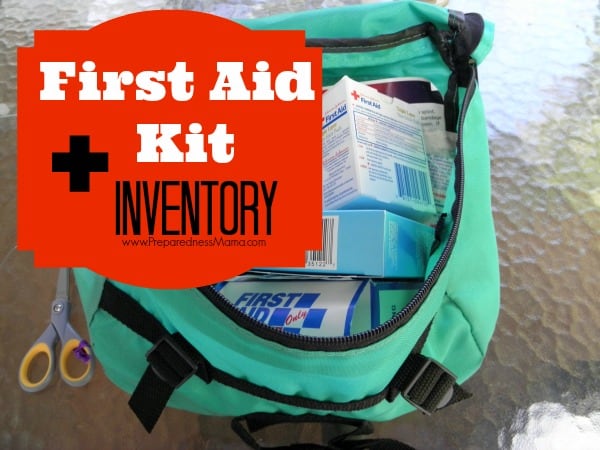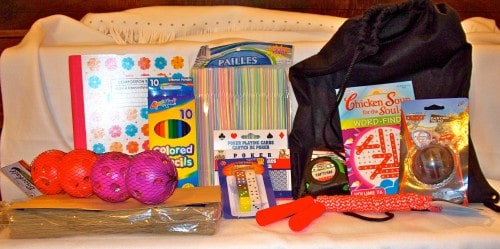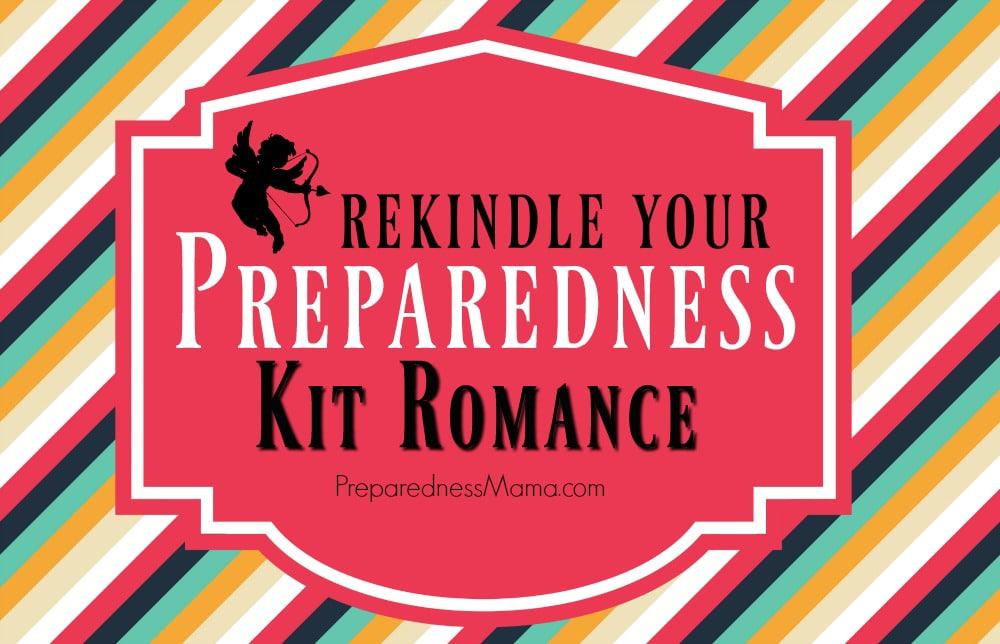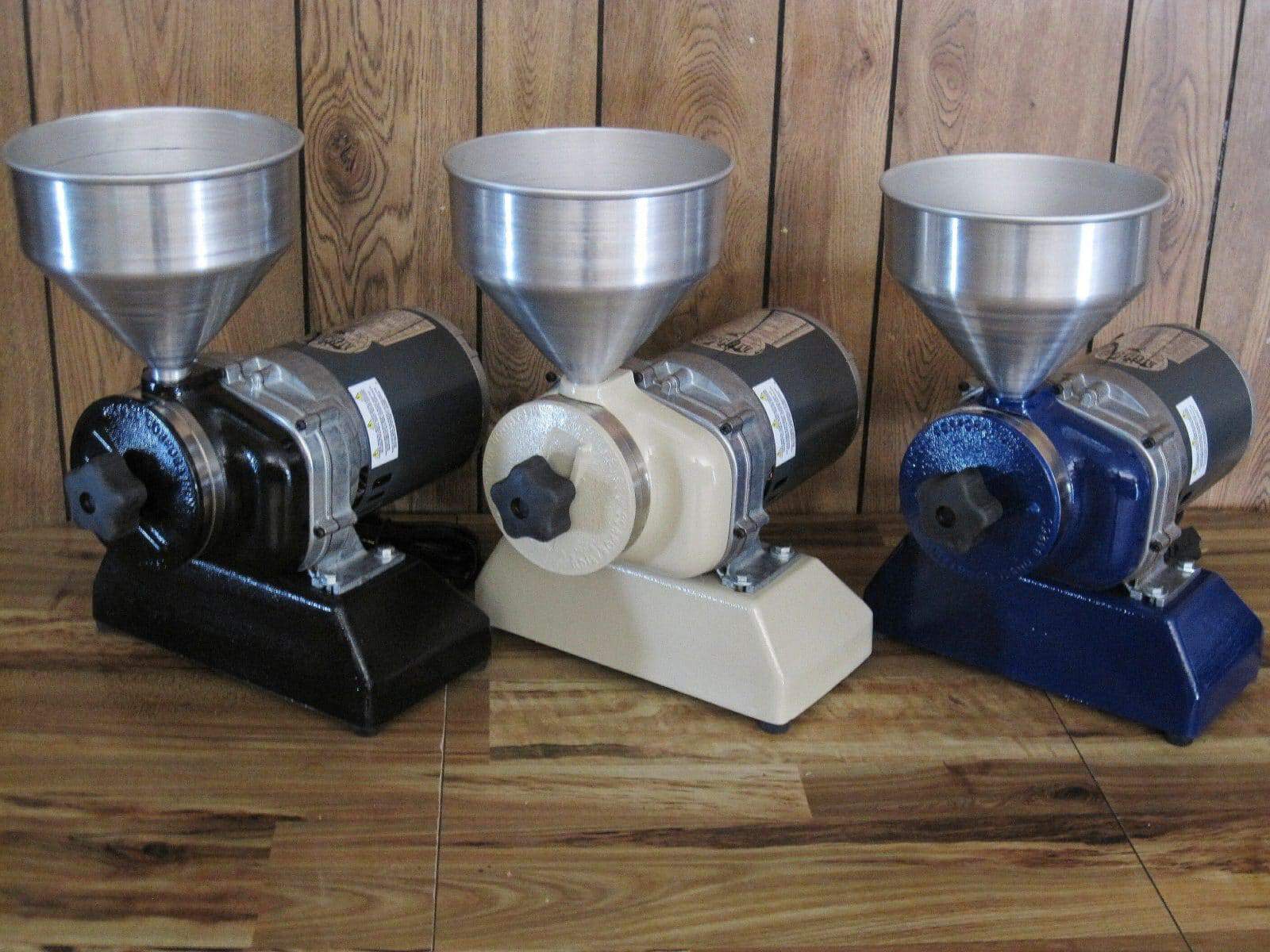Have you ever noticed that if you leave a box of adhesive bandages out on the bathroom counter your children will find a use for them – and before you know it, they’re GONE! This happens in my house – ALL. THE. TIME. – and when we really do have a need for a bandage, none can be found.
What do we end up doing then…why raiding our first aid kits of course! It was suggested to me by a wise mother, that I ought to purchase some bandages at the dollar store for just such a “sticky finger” occasion. I plan on doing it today.
As I was preparing to write this, I pulled out my small first aid kit to see how badly it has been raided and start my inventory process. This is what I found… it’s a complete mess.
Actually we have several first aid kits in our home, from this small portable kit that I put together with a few items, and a big professional one that I purchased at Costco. These each have a use in our home. I have also utilized just about every drawer and cupboard in the bathrooms, to store extra supplies.
Unfortunately, I have lost track of what I have – and what we’ve used – and where it is – so it’s time to inventory and restock.
What a Family First Aid Kit Needs to Contain:
- Hand Sanitizer. In a disaster scenario, hand sanitizers can mean the difference between sickness and health in the long run. Stock up on as much sanitizer as you can and look for a formula that you and your family are not allergic to and like to use (test the product beforehand).
- Antibacterial Baby Wipes. These are a no-brainer as well. Baby wipes are not only a must-have in case you’re bugging out with a small baby, but they are great for keeping pathogens at bay, for spot cleaning, and for saving precious water for hygiene.
- Sterile Gauze Bandage Rolls. These are for wound dressing and are vital for your family’s survival first aid kit. Don’t skimp on quality though. Cheaper products are made of cheap fabric and may not be sterile. Stock up on a more expensive but reliable brand such as Kerlix.
- Sterile Gauze Pads. The ideal size is 4″ x 4″ and you should get both sterile and non-sterile pads. These are vital for cleaning and dressing wounds, so it is best that the sterile ones are individually wrapped (don’t fall for manufacturers’ “sterile” claims if the pads are not packaged individually. Look for a product that is breathable as well because wounds need air too to heal.
- Non-Stick Pads. For burns, scratches, minor cuts, and other light open wounds, non-stick pads are essential. Get a product that is large enough for you to cut to fit the wound’s size, is highly absorbent, and breathable. Unlike sterile gauze pads, non-stick pads won’t cling to the open wound and let it heal. Make sure that the product is non-stick on both sides.
- Alcohol Prep Pads. These are great for disinfecting small cuts and punctures or for sanitizing surfaces just like baby wipes are but only a bit better. Look for a product that is individually wrapped and has a minimum 70% isopropyl alcohol concentration. These pads are also great for preparing the skin before injections, so they’re an absolute must-have in your first aid kit.
- Compression Bandages. These can be a lifesaver in case of emergency wound dressing as they act as a tourniquet and can stop a nasty bleeding while shielding the wound from pathogens and dirt. These are great for major wounds such as gunshot wounds, but you need to pair them with a tourniquet, scissors (to get rid of any fabric around the wound), and a compressed gauze for a second hole if there are two holes. Look for “Israeli bandage” or “emergency bandage” on YouTube for step-by-step instructions, and make sure that you know how to use a compression bandage BEFORE you have to use it.
- Benzoin Tincture. Also known as the “bandage glue,” this one is a must-have to keep bandages firmly in place.
- ACE Wrap – to keep large wound dressings in place and as backup compression bandage.
- Tourniquet. For heavy bleeding and snake bites. Get a high quality one. It could save your life.
- Styptic Pencil or Clotting Gauze if you need to stop bleeding from minor wounds.
- Band-Aids. Never go without these and get as many as you can – those blisters can be a huge pain. And don’t skimp on quality.
- A Pair of Good EMT Scissors.
- Scalpel.
- Medical-grade Suture Material/ very fine Nylon Fishing Line (keep it sterile) and Suturing Needles (various sizes)
- Sterile Abdominal Pads. For larger protecting, absorbing the liquid, and and covering larger wound areas.
- Medical Tape and lots of it. Get a product that is designed for athletes or physical therapy, that doesn’t stick to your skin, and that can be torn with your fingers (this is a nice bonus).
- Disposable Nitrile Gloves because you don’t want to dress a life-threatening open wound without these on.
- Local Anesthetic such as lidocaine – you’ll need a prescription for it.
- Q-tips and Cotton Balls
- Tweezers – these are great for removing splinters, glass shards, and ticks from skin’s surface.
- Wound Closure Strips. These are much cheaper than stitches and they’re great for cuts and lacerations.
- Thermometer
- Mylar Thermal Blanket. These are great for reflecting heat back to you and (paired with a sleeping bag) could save your life in case of hypothermia. Do your research on how to use these (YouTube is your friend) because they can do more harm than good if used incorrectly in emergency situations.
- Oral Rehydration Salts. These could be a lifesaver in case of terrible diarrhea or severe dehydration as they restore the lost electrolyte balance.
- Anti-Diarrhea Meds such as Kaopectate, Pepto Bismol, or Imodium
- Antinausea Meds such as Zofran, Benadryl, or Anzemet.
- Rubbing Alcohol and/or Hydrogen Peroxide (3%). Many medics advise against cleaning open wounds with rubbing alcohol or hydrogen peroxide as they can burn healthy cells while killing the microbes and delay healing. Saline solution or sterilized water and mild soap are reportedly better at cleansing open wounds than these two, but do have them in your first aid kit for various (antimicrobial) uses.
- Irrigation Syringes and Needle Syringes (various sizes)
- Antiseptic Skin Cleanser. This one is great at containing skin infections, disinfecting surfaces (Covid-19, anyone?), and skin preparation before minor medical procedures. Rumor has it that some people use it as a backup body wash but it is a bit drying for my taste.
- Topical Antibiotics such as Bacitracin or Neosporin to speed up healing of small cuts, scrapes, and burns. Check whether any of your family members is allergic to Neosporin and rotate these two as soon as they hit expiration date.
- Oral Antibiotics (prescription needed).
- OTC Pain Killers such as ibuprofen, acetaminophen, or aspirin – these reduce fever and inflammation as well.
- Hydrocortisone Cream Packets (individually wrapped) – for skin irritations and rashes caused by poisonous plants, eczema, and insect bites.
- Zanfel Soap to cleanse and soothe skin irritation and rashes caused by poison ivy, poison oak, sumac, and other similar plants.
- Allergy Relief Medication such as Claritin or Benadryl
- Epi-Pen for severe allergic reactions (needs prescription).
- Burn Ointment – for first and second degree burns and skin irritations. In minor burns, you can get lightning fast relief with a quality aloe vera gel (I like the one from Herbalife best – I have no affiliate relationship with them. The product just does its job.)
- Antifungal Ointment such as Clotrimazole or Terconazole.
- Eye Wash/ Eye Cups
- Clove Bud Oil for toothache: Apply directly on to the tooth with a swab, undiluted.
- Temporary Tooth Repair Kit. Make a temporary filling to repair lost dental fillings or cover an exposed nerve. Bear in mind that no temporary dental cement can get rid of the underlying tooth abscess on its own.
- Dental Floss
- Water Purification Tablets/ Personal Water Filter – yes, I know these two should sit in our 72-hour emergency kits, but since having clean, drinking water during a disaster is critical for our survival, I keep these in here.
- Sunscreen
- Reusable Cold pack/ Hot Pack
- Duct tape. Here are some genius ways of using the duct tape in your first aid kit.
PreparednessMama’s Note: This list is not exhaustive: You can add or remove first aid supplies based on your family’s needs and particularities. Plus, I am not a medical professional, so the information in this post is not designed to be used as professional medical advice. I did my own research and so should you. I just hope my list is a good starting point.
Today’s Challenge: Inventory your first aid supplies and make sure you have a small portable kit
GOOD: Only you know how much is needed for your family, so here are some general guidelines:
- // Download the simplified spreadsheet First Aid Inventory* and inventory each first aid item you have in your house, making note of how much you have and where it is stored for future reference.
- // Decide where you will keep your supplies. Are they centrally located so you can get to them when needed? Have you buried the frequently used items in the back of a closet so they are hard to get to? There is nothing more frustrating than having a bleeding child or serious injury and not remembering where you have stored the 4×4 gauze pads.
- // Get a container for your portable kit and decide where to keep it – away from the kids, of course! Chose something lightweight but sturdy.
BETTER – Do you have a first aid guide in your home? Search the internet for “First aid books pdf” and download one of the many free ones that can be found. Read up on some of the basics. Some of my favorite first aid books on Amazon are:
BEST – Be really prepared and have your first aid kits in order. Go on to YouTube and watch a video on a first aid skill you have not mastered yet. Or download the Red Cross First Aid app for your smartphone.
Here are the Red Cross recommendations for a first aid kit for a family of four:
// 2 absorbent compress dressings (5 x 9 inches)
// 25 adhesive bandages (assorted sizes)
// 1 adhesive cloth tape (10 yards x 1 inch)
// 5 antibiotic ointment packets (approximately 1 gram)
// 5 antiseptic wipe packets
// 2 packets of aspirin (81 mg each)
// 1 blanket (space blanket)
// 1 breathing barrier (with one-way valve)
// 1 instant cold compress
// 2 pair of non-latex gloves (size: large)
// 2 hydrocortisone ointment packets (approximately 1 gram each)
// Scissors
// 1 roller bandage (3 inches wide)
// 1 roller bandage (4 inches wide)
// 5 sterile gauze pads (3 x 3 inches)
// 5 sterile gauze pads (4 x 4 inches)
// Oral thermometer (non-mercury/non-glass)
// 2 triangular bandages
// Tweezers
// First aid instruction booklet
* This list is a suggestion as well. You should use it as the basis for creating a personalized first aid kit that will fit your family needs. Not all of these items will fit in your “kit“, some will need to be stored in an easily accessed location In your home.
This post contains affiliate links. Thank you for supporting PreparednessMama in this way!

Preparedness Mama and its collaborators have created a one-stop shop of critical resources for families looking to prepare for disaster. We know firsthand that getting ready for the worst with a big family poses some particular challenges.
We’ve learned from the past so that you don’t have to make the same mistakes again. Fear of the unknown is one of the scariest things in life, but we hope that Preparedness Mama’s treasure trove of practical advice will make that unknown less daunting and ultimately help take the scared out of being prepared for every single one of our readers.










Leave a Reply